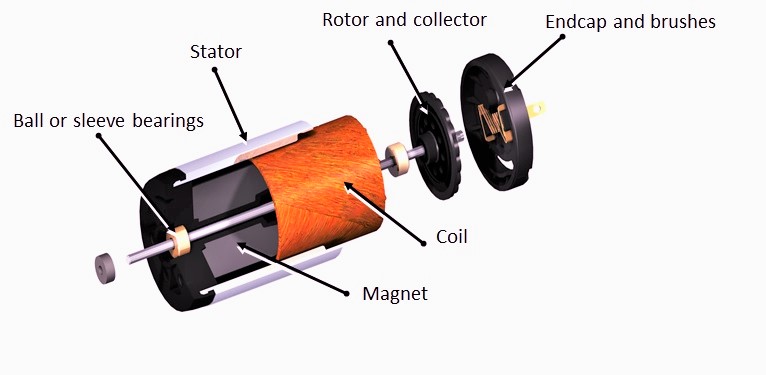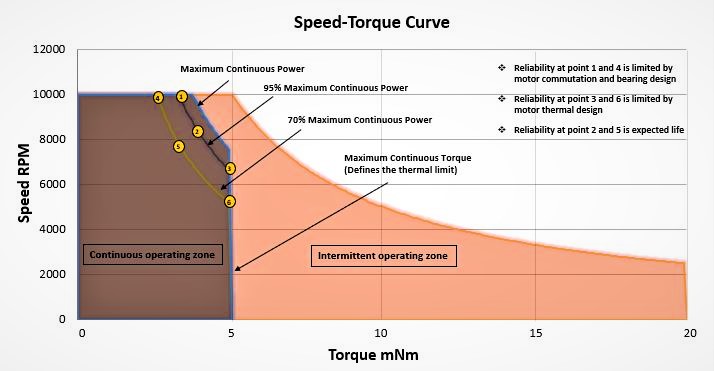The number of products incorporating electric motors is increasing exponentially. Some of these products are designed to be disposable, with cost taking precedent over longevity. In others, where the expectation is that the product will operate over hundreds or even thousands of hours, long-term reliability is key. Focusing on coreless brush DC motors, Utpal Rabha considers the parameters and conditions that impact motor life
Coreless brush DC motors have become a popular option for design engineers in high-performance applications requiring low friction, low starting voltage, high efficiency, good thermal dissipation and linear torque-speed characteristics. Offering high power density in a compact package, these motors are increasingly used in mission-critical applications such as insulin and infusion pumps, as well as biologic delivery devices.
In all of these applications, performance is a primary consideration, but so too is reliability. The proven design is inherently reliable, consisting of a coreless rotor (self-supporting coil) combined with precious metal or carbon copper commutation system and rare earth or Alnico magnets. Even so, no motor lasts forever; for the design engineer, understanding the impact of the various operating points on the lifespan of the motor is key to ensuring the ultimate reliability of the end application.
The characteristics of a DC motor are represented by the motor’s speed-torque curve, mapping torque against speed. A typical plot would highlight the two key regions of operation of the motor: the continuous operating zone and the intermittent operating zone, with the two divided the maximum continuous torque line, which represents the thermal limit of continuous motor operation under normal conditions.
In the intermittent zone, the motor can be operated for a duration that is limited by the thermal time constant and level of developed torque. As the motor approaches the peak torque rating, the duration of operation becomes shorter. Any operation above the continuous torque limit is also affected by the overall duty cycle.
There are a number of critical motor design factors that define reliability at various load points. Reliability at the high-speed load points is a function of commutation and bearing design, while reliability at the maximum continuous torque load points is a function of its thermal design.
Reliability at any point on the right side of the maximum continuous torque line in the intermittent operating zone is the function of both thermal and mechanical design. Within the region of continuous operation, long-term reliability is impacted most strongly by power; operating the motor at 70% of maximum continuous power will result in higher reliability than operating at 95% of maximum continuous power.
With increasing demands for higher speeds from a coreless miniature DC motor, the stress on its commutation system or bearing design also increases. Increasing the maximum torque requirement also increases stress on the thermal and mechanical design of various motor subassemblies, showing that the reliability of the motor varies when operating at different load points (torque and speed combinations).
For design engineers, then, it is important to understand the contribution different parameters have on motor longevity, with the torque/speed curve provided by the motor manufacturer highlighting the region of operation for the motor in a given application. Additional confidence can be gained from the extensive failure testing conducted by motor manufacturers such as Portescap, who perform reliability tests on their motors at defined load points, duty cycles and environmental conditions.
Using what is known as the Weibull analysis method, these tests are designed to determine the failure point of the motor, with the failure criteria clearly defined before starting the test. Failures can be detected by observing a sudden increase in current drawn, overheating, high noise and vibration, or mechanical failure.
This systematic approach, using a complex mathematical model based on the test results of sample motors, can then be used to estimate the reliability characteristics of coreless brush DC motors used in different applications, giving the design engineer a good start point in predicting the lifespan of the motor in the end product. It also means motor manufacturers who have conducted such comprehensive testing on their motors are well placed to advise on the best product for a given application to achieve the required longevity.
This further reinforces the benefits of engaging with a knowledgeable supplier such as Portescap in the earliest phases of a new product development. It is the point before the mechanical aspects of the design are set in stone where the motor manufacturer can make the biggest contribution to a successful end product, suggesting design tweaks that will enable to optimum motor to be selected for the best performance at the lowest cost – and without any compromise on reliability.
Utpal Rabha is lead engineer at Portescap.
 Engineer News Network The ultimate online news and information resource for today’s engineer
Engineer News Network The ultimate online news and information resource for today’s engineer







